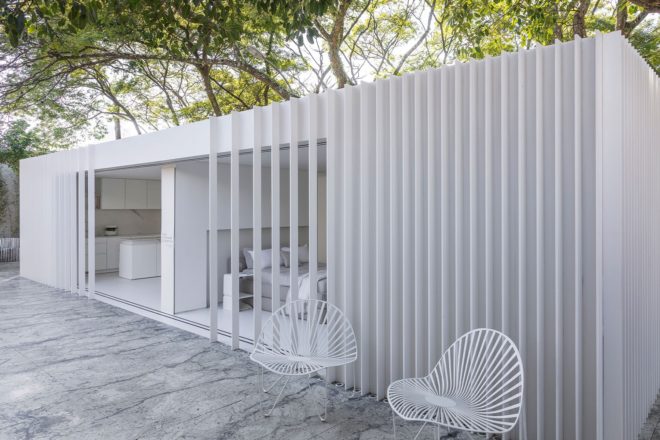The Casa Contêiner Cosentino (Container House) is a project of impossibilities turned into reality.
The house isn’t huge in floor size – it measures 60-square-meter at maximum – but to the eyes, it appears spacious and bright.

The Casa Contêiner Cosentino (Container House) is a project of impossibilities turned into reality.
The house isn’t huge in floor size – it measures 60-square-meter at maximum – but to the eyes, it appears spacious and bright.

And this has all been constructed by simply joining two old industrial shipping containers.
Although one would never think to use containers as the main structure for a building – much more a residence; that’s exactly the kind of paradox that Brazilian architecture firm Marilia Pellegrini set out to prove possible.

The company’s goal for the Container House was to show that the supposedly formal and frigid environment of an industrial shipping container could actually be transformed into a liveable modern space through the strategic use of elegant yet cost-effective materials.
The architects of the house were inspired by the neo-modern concept of minimalism and the so-called “aesthetic of emptiness” – a term coined by Kenya Hara, creative director of MUJI, to convey the idea of simple and clean living.

Instead of using costly Carrara marble, Dekton Opera – a marble-like material made from a proprietary blend of natural quartz stone, porcelain, and glass – was used for most of the house’s main surfaces such as the kitchen benchtops and splashbacks, as well as the bathroom walls.

The end result is a gorgeous, cosy yet roomy living area, kitchen, and laundry area in one container, and a sensibly sparse but inviting bedroom with a pristine en-suite bathroom in the other.
Undoubtedly, the house falls on the small side for a family, but it’s been built and finished in such a way that it could serve as an outhouse on an existing property.
